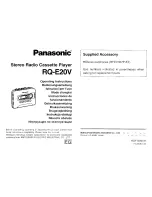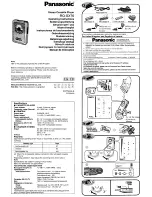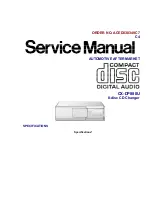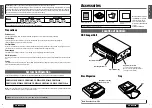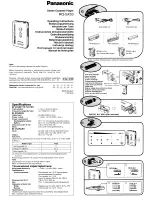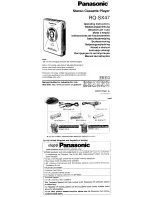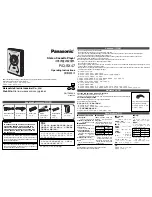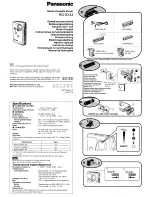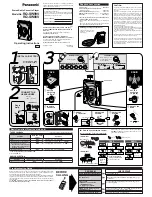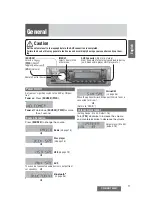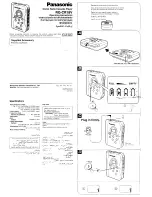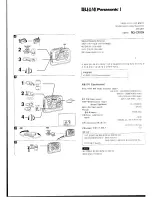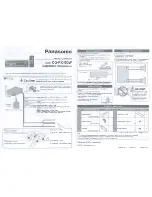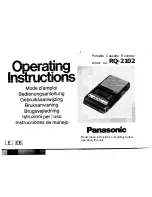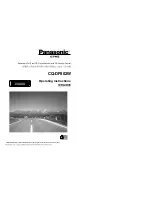
26
ADDITIONAL INFORMATION
■
Channel (ch)
A channel is an audio type that has been divided based on
range and other characteristics.
Ex. 5.1 channel
• Front speakers, Left (1ch), Right (1ch)
• Center speaker (1 ch)
• Surround speakers, Left (1ch), Right (1ch)
• Subwoofer (1 ch x 0.1
*
= 0.1 ch)
* In contrast to a full 1-channel band, a component designed to
enhance low frequency sound for added effect.
■
COMPONENT VIDEO OUT
Jacks for inputting or outputting a component video
signal. Component video signal consists of three lines, the
luminance signal (Y) and two color difference signals
(P
B
/C
B
, P
R
/C
R
), which enable to provide high-quality
video.
■
DTS (Digital Theater Systems)
Digital surround sound system developed by Digital
Theater Systems, Inc., which provides 5.1 channel audio.
With an abundance of audio data, it is able to provide
authentic-sounding effects.
■
NTSC (National Television System
Committee)
NTSC is a video signal system (525 lines, 30 frames per
second) used in North America, Central America, a
number of South American countries, and some Asian
countries, including Japan.
■
PAL (Phase Alternating Line)
PAL is a video signal system (625 lines, 25 frames per
second) used in the United Kingdom, much of the rest of
western Europe, several South American countries, some
Middle East and Asian countries, several African
countries, Australia, New Zealand, and other Pacific
island countries.
■
Pan & Scan and Letterbox
In general, DVD Video is produced for viewing on a wide
television screen with an aspect ratio of 16:9. This means
you can now view most material with the intended aspect
ratio on a wide-screen television.
This ratio will not fit on a standard television that has an
aspect ratio of 4:3. Two picture styles, Pan & Scan and
Letterbox, deal with this problem.
• Pan & Scan cuts off the left and right portions of the
picture to fill the screen.
• Letterbox inserts black bands at the top and bottom of
the picture to reproduce an aspect ratio of 16:9.
■
PCM (Pulse Code Modulation)
A signal that is changed to digital format without
compression. A CD is recorded with 16-bit sound at 44.1
kHz, while DVD recording is anywhere from 16 bits at 48
kHz to 24 bits at 192 kHz, which makes it a higher quality
sound than CD. This signal also has a type called Packed
PCM (PPCM) that can be compressed without any loss of
data.
■
Progressive scan
A method of displaying all scanning lines in a frame at
once, reducing flicker noticeable on a larger screen and
creating a sharp and smooth image.
■
Sampling frequency
The number of sampling (process for digitalizing analog
signals) per second. In principle, the higher the sampling
rate, the wider the frequency range that can be played
back, and the higher the quantized bit rate, the finer the
sound that can be reproduced.
■
Title, Chapter (DVD)
DVD video lets you divide a disc in a big way by titles or a
small way by chapters. Each division is either called a title
number or a chapter number.
■
Track (CD/Video CD/Super Video CD)
A CD, VCD or SVCD can be divided into a number of
segments (tracks). Each division is called a title number.
Glossary
Содержание CinemaStation DVD-S30
Страница 1: ...BAVL OWNER S MANUAL DVD PLAYER DVD S30 ...





















